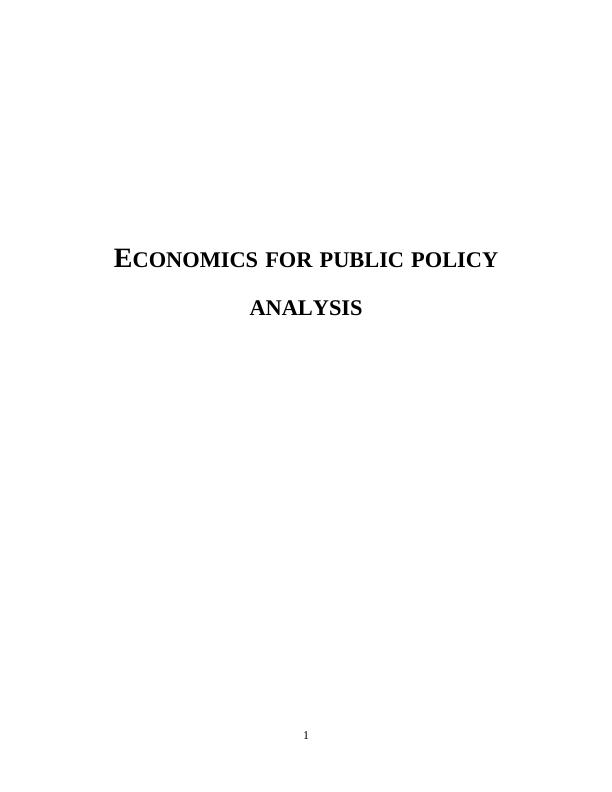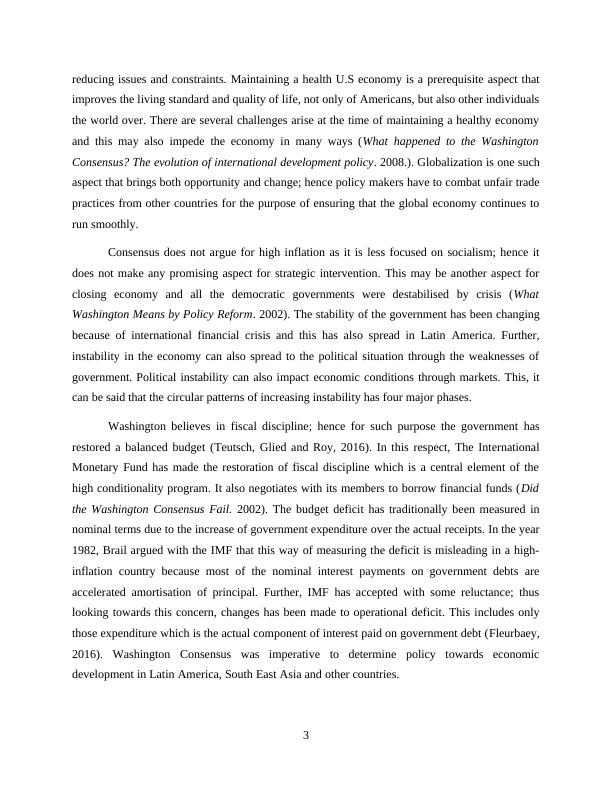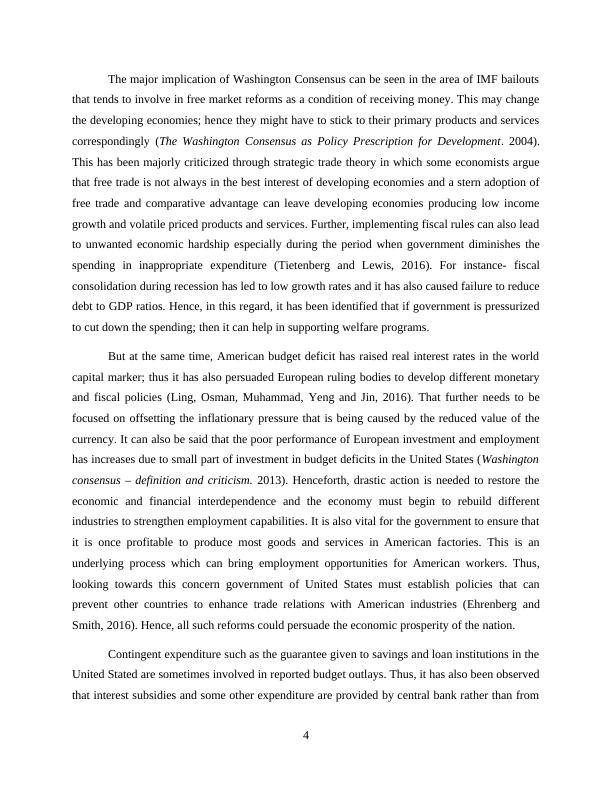Ask a question from expert
The Washington Consensus: An Economic Policy Prescription for Public Policy Analysis
12 Pages3999 Words279 Views
Added on 2020-01-07
About This Document
Economics for public policy analysis The Washington Consensus is a set of 10 economic policy prescriptions that is considered to constitute the standard of reform package which is promoted for crisis wracked developing countries by Washington D.C (Munda, 2016). Washington Consensus refers to set of broadly free market economic ideas which are supported by international organizations such as IMF, the World Bank and the US. It has been observed that the Washington Consensus advocates free trade, floating exchange rates, free markets and macroeconomic stability.
The Washington Consensus: An Economic Policy Prescription for Public Policy Analysis
Added on 2020-01-07
BookmarkShareRelated Documents
End of preview
Want to access all the pages? Upload your documents or become a member.
Global Macroeconomic Policies: Impact of Rapid Growth and Stock Market Booms
|9
|2587
|496
Role of Fiscal Policy in Stabilizing the Australian Economy
|20
|3091
|45
Comparative Analysis of Macroeconomic Performance of Australia and USA
|21
|4999
|495
Analyzing the Macroeconomic Performance of Australia
|23
|4820
|68
Macroeconomic Analysis of Australia: Real GDP Growth, Inflation, Unemployment, Net Export and Real Exchange Rate
|14
|3472
|388
Headwinds of the US Economy: An Analysis
|10
|1427
|201



